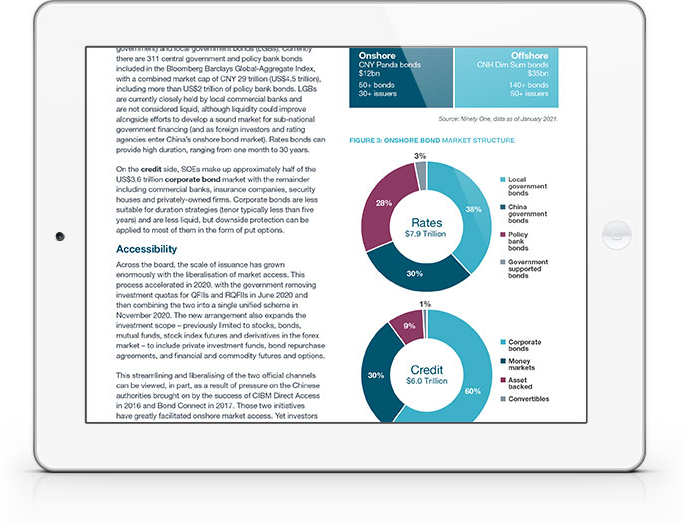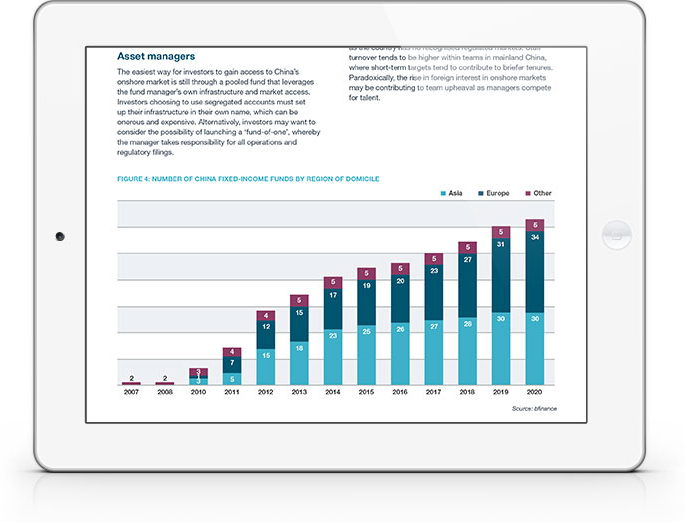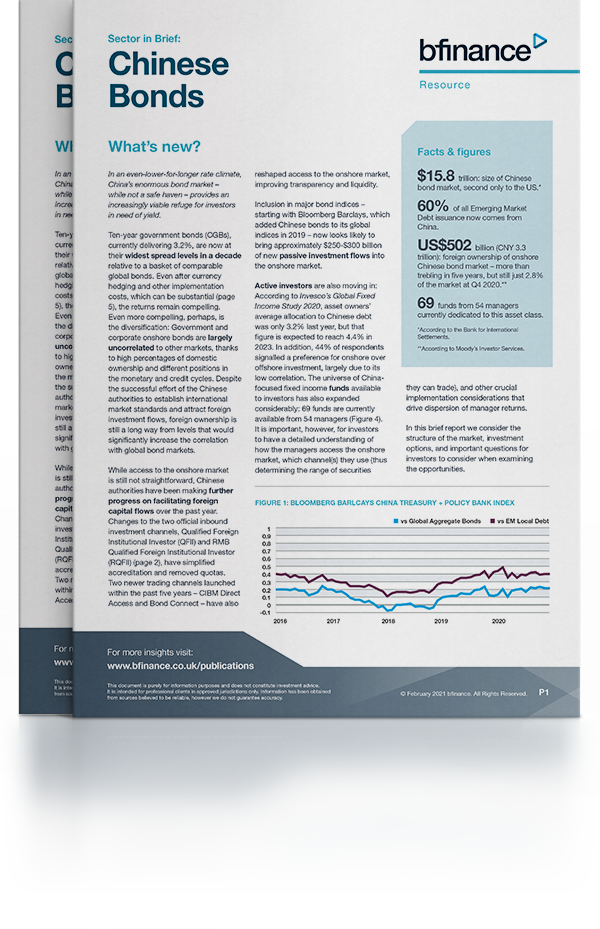
IN THIS PAPER
Market Structure: As major providers of global indices incorporate Chinese bonds into their benchmarks, passive investment flows are destined to rise sharply. We take a closer look at the structure of the Chinese bond market – which is made up of a multiplicity of interrelated markets, both onshore and offshore, in rates and credit – to help define the characteristics of different types of securities.
Means of Access: While investing in China’s onshore bond market is still challenging, Chinese authorities have been making tremendous progress in facilitating foreign capital flows over the past year. Changes have simplified access, improved transparency and boosted liquidity for overseas investors. As a result, foreign direct holdings of Chinese government bonds exceeded 10% for the first time in January.
Manager Differentiation: Managers are designing and launching new China-focused fixed-income products with unprecedented speed. As the number of pooled funds expands, investors need to focus closely on how managers are gaining access to China’s onshore market, because the method directly impacts the types of securities these managers can use to populate their strategies.

WHY DOWNLOAD?
China’s maturing bond market is providing investors with an increasingly viable refuge from low-to-below-zero real interest rates in developed markets. Nearly 60% of all emerging market debt issuance now comes from China, and investors are parsing those offerings with an eye to the probable risks and returns. We’ve taken a look at the investment options and offered our view of the most important questions investors need to ask before initiating – or building – their own investment allocations.
Important Notices
This commentary is for institutional investors classified as Professional Clients as per FCA handbook rules COBS 3.5R. It does not constitute investment research, a financial promotion or a recommendation of any instrument, strategy or provider. The accuracy of information obtained from third parties has not been independently verified. Opinions not guarantees: the findings and opinions expressed herein are the intellectual property of bfinance and are subject to change; they are not intended to convey any guarantees as to the future performance of the investment products, asset classes, or capital markets discussed. The value of investments can go down as well as up.


 English (Global)
English (Global)  Français (France)
Français (France)  Italiano (Italia)
Italiano (Italia)  Dutch (Nederlands)
Dutch (Nederlands)  English (United States)
English (United States)  English (Canada)
English (Canada)  French (Canada)
French (Canada) 

